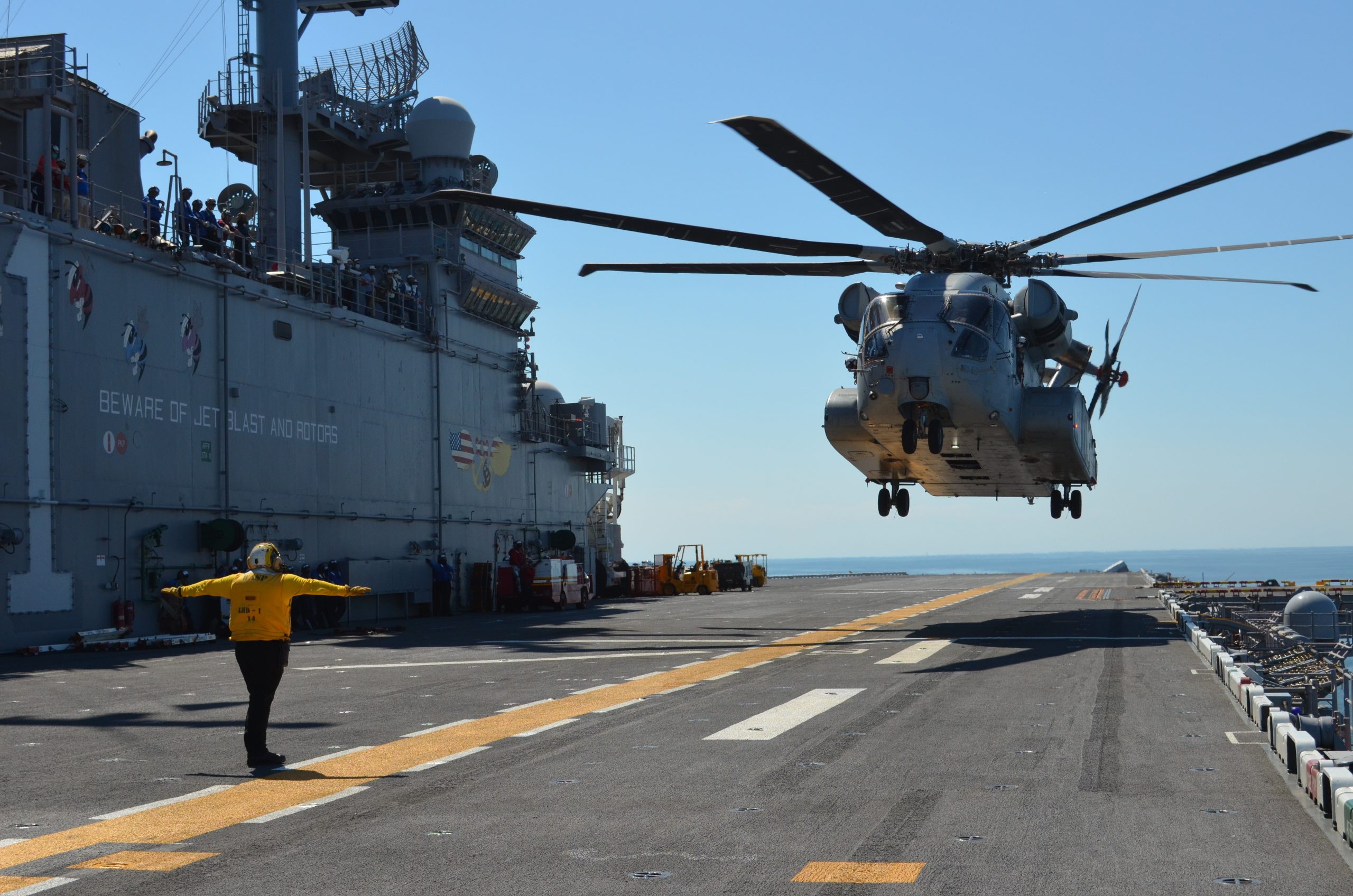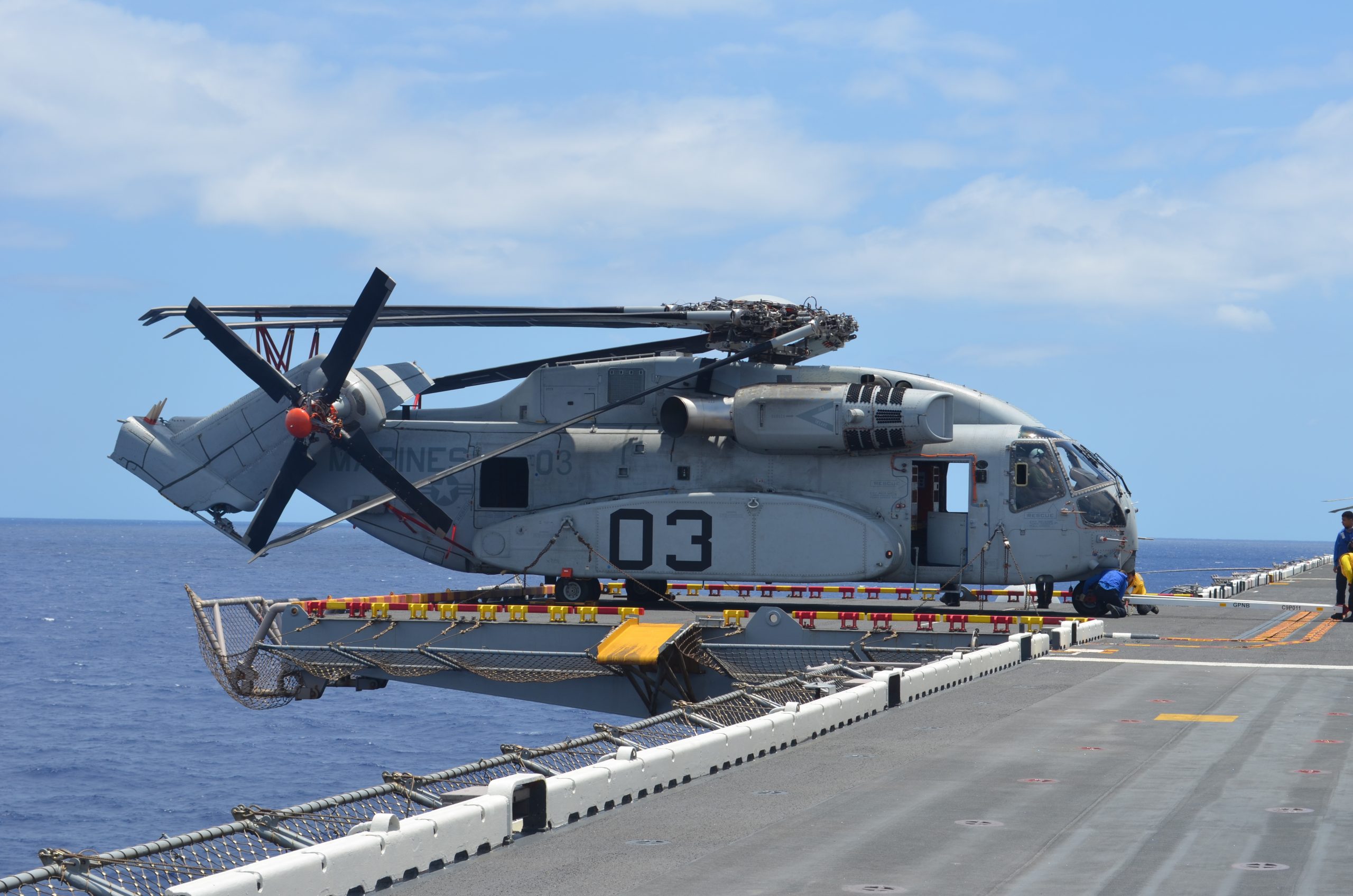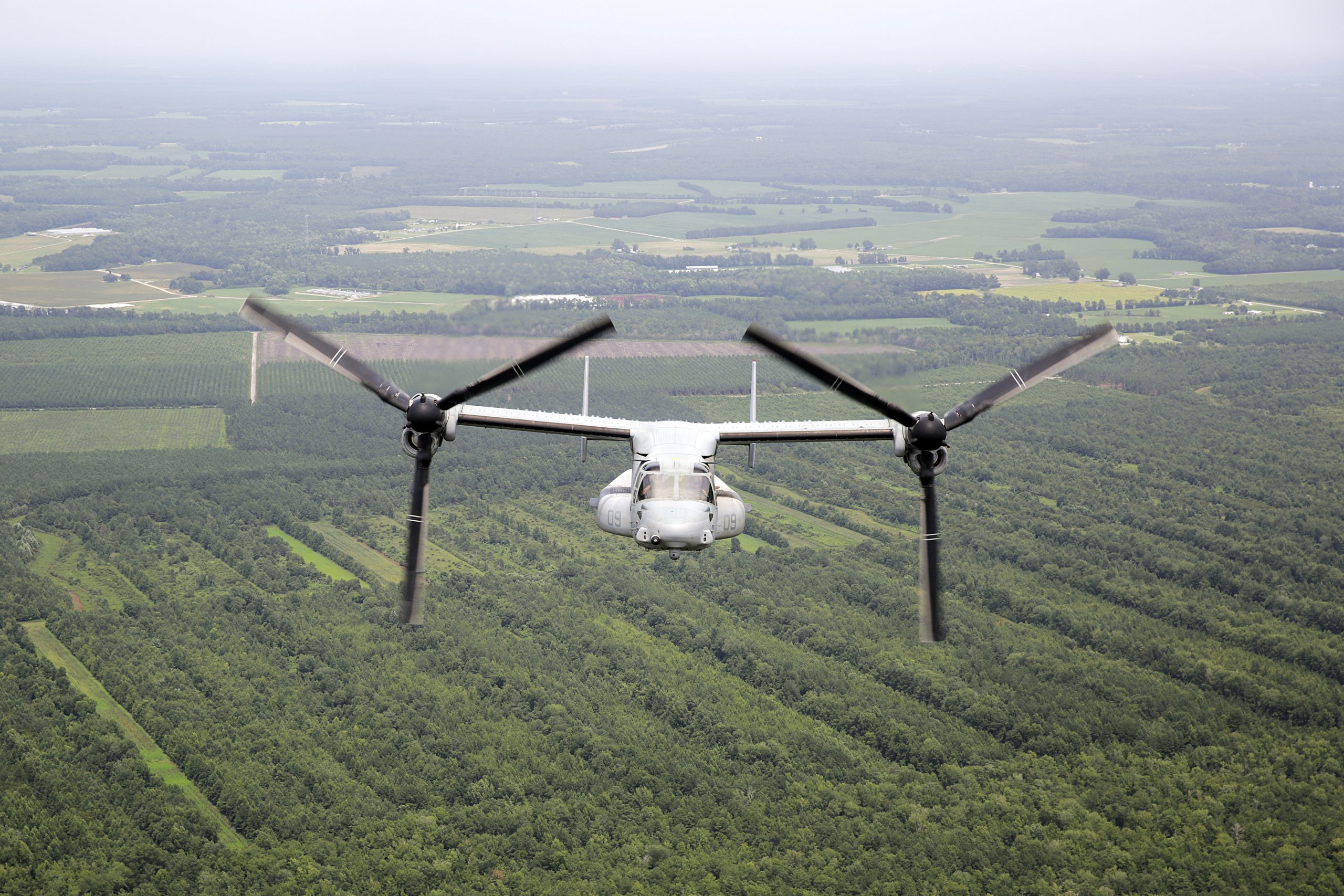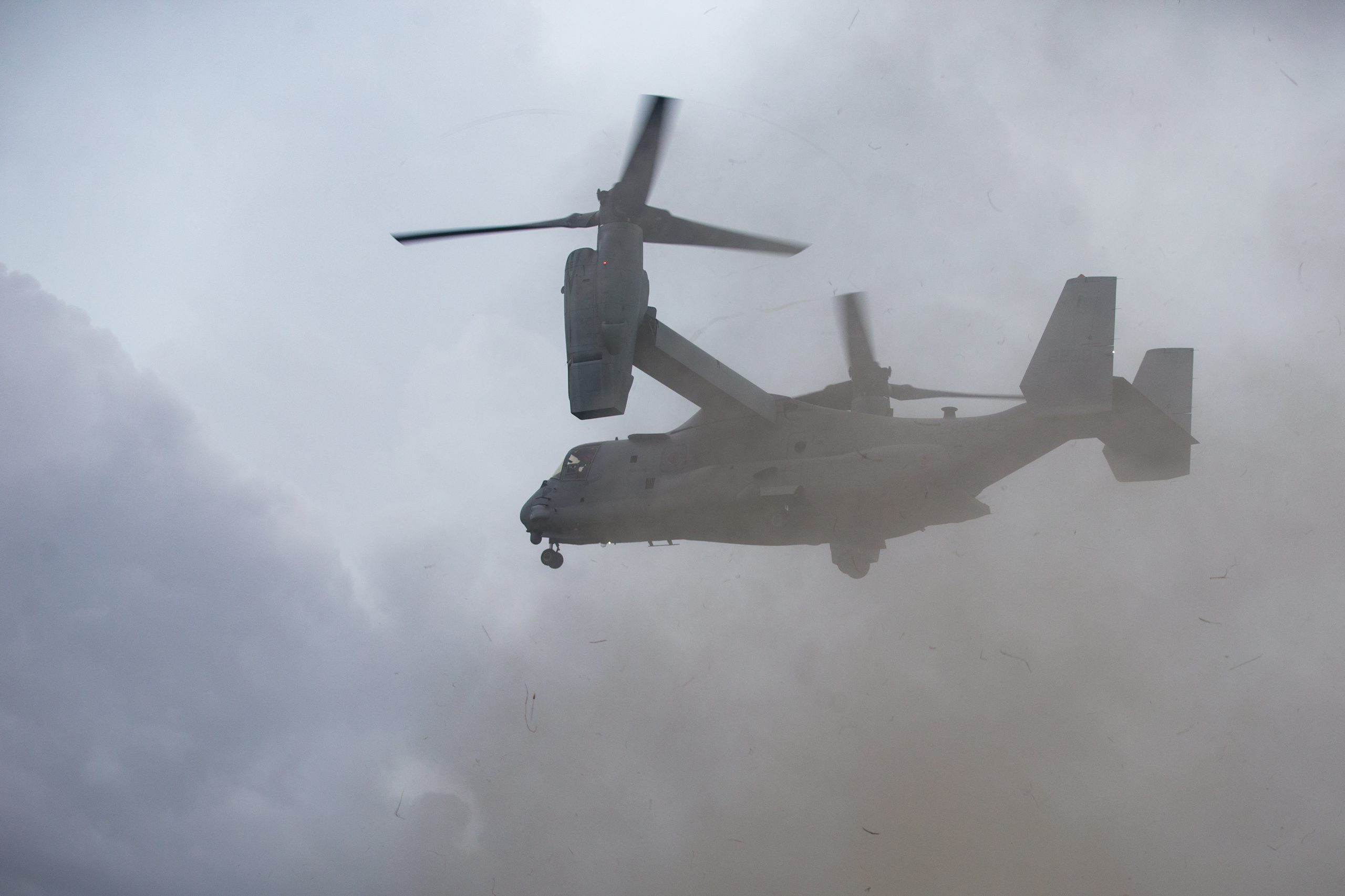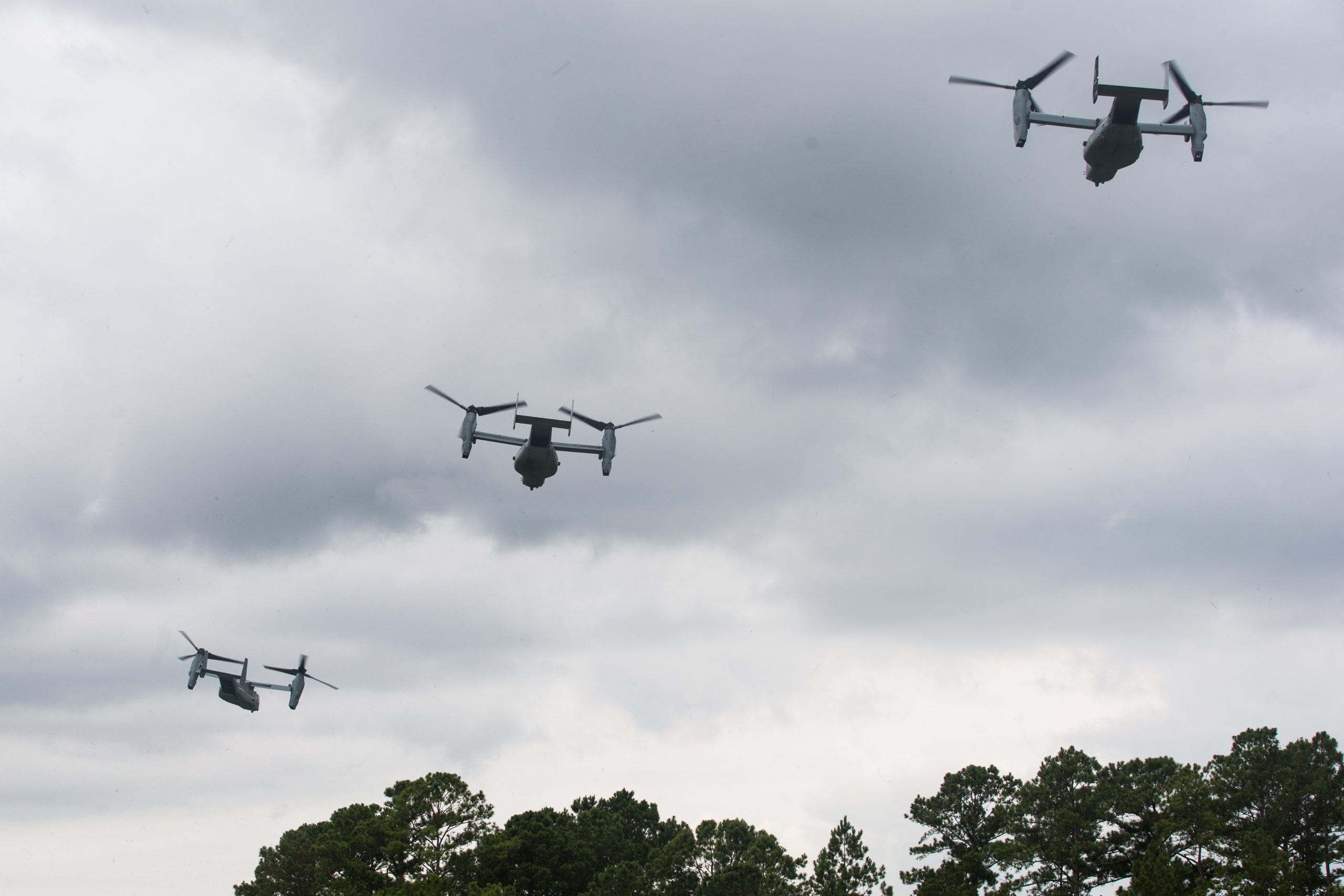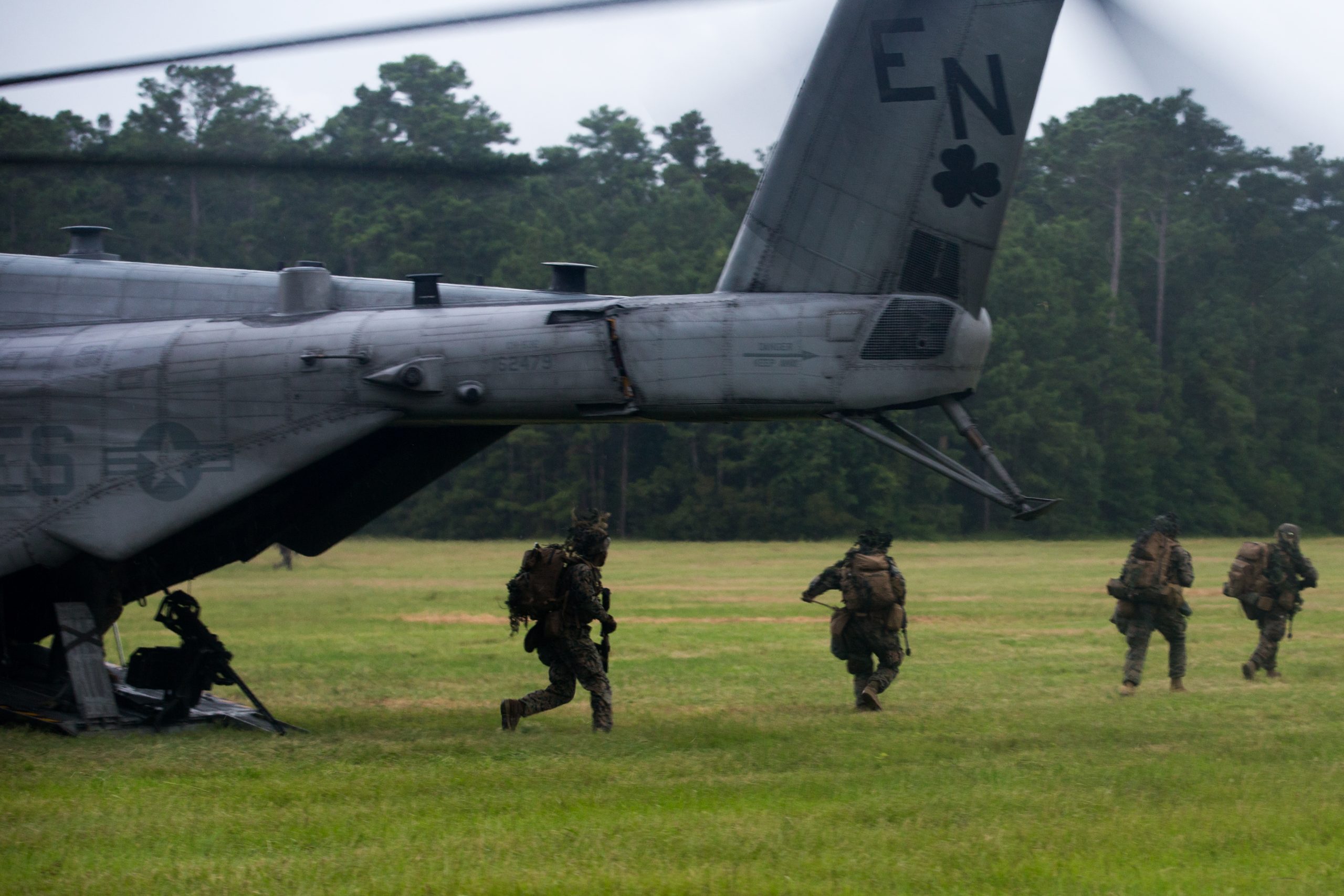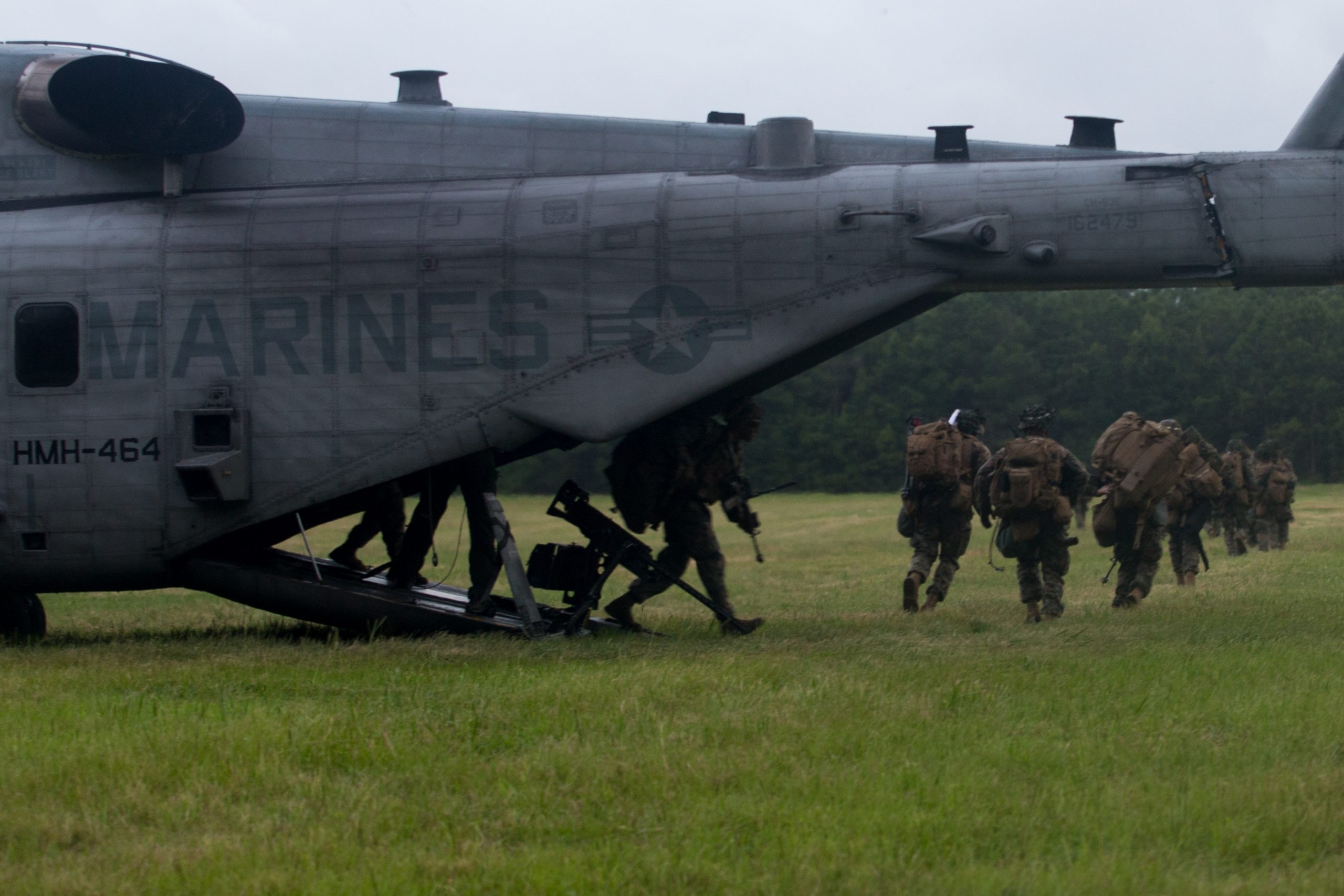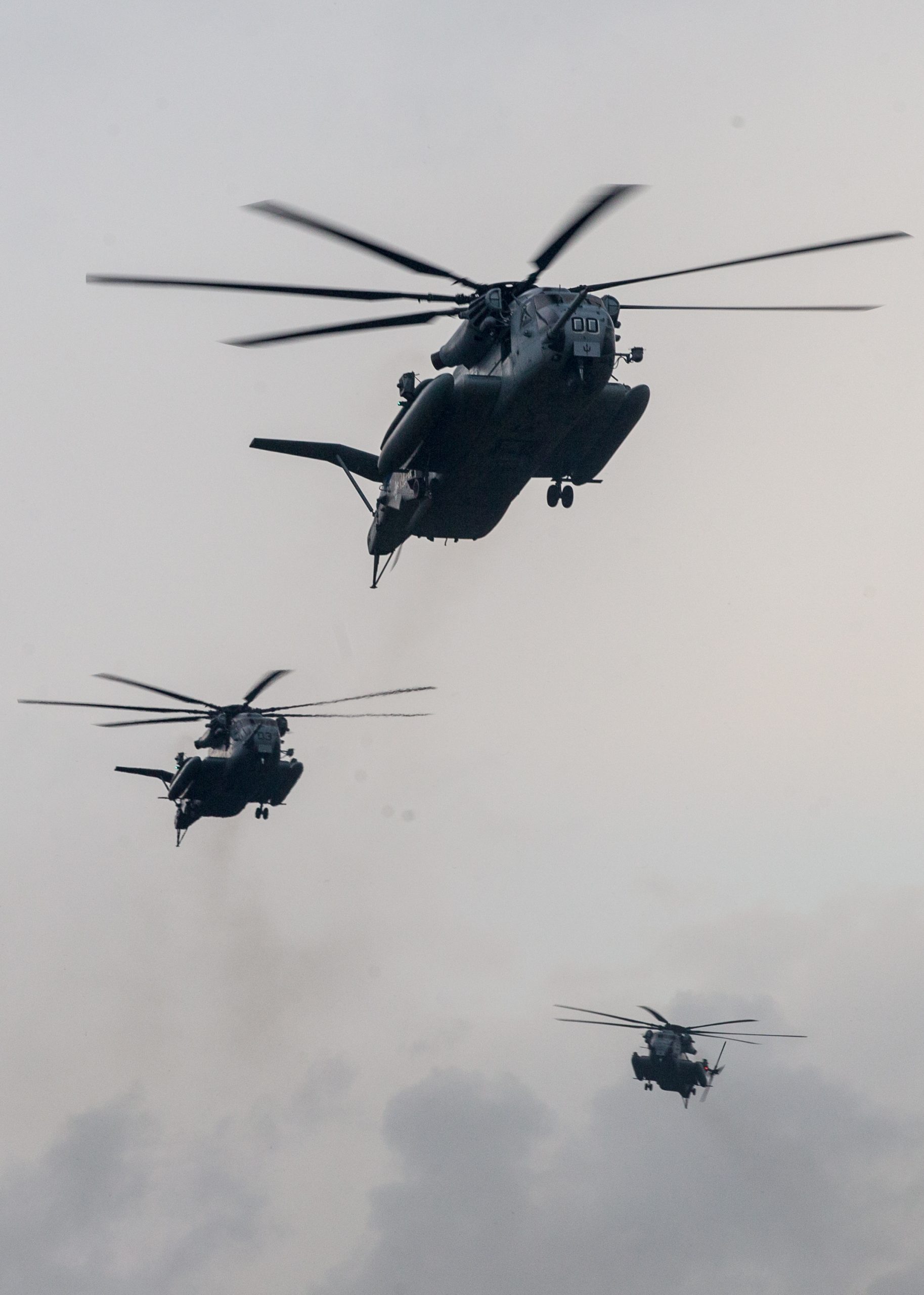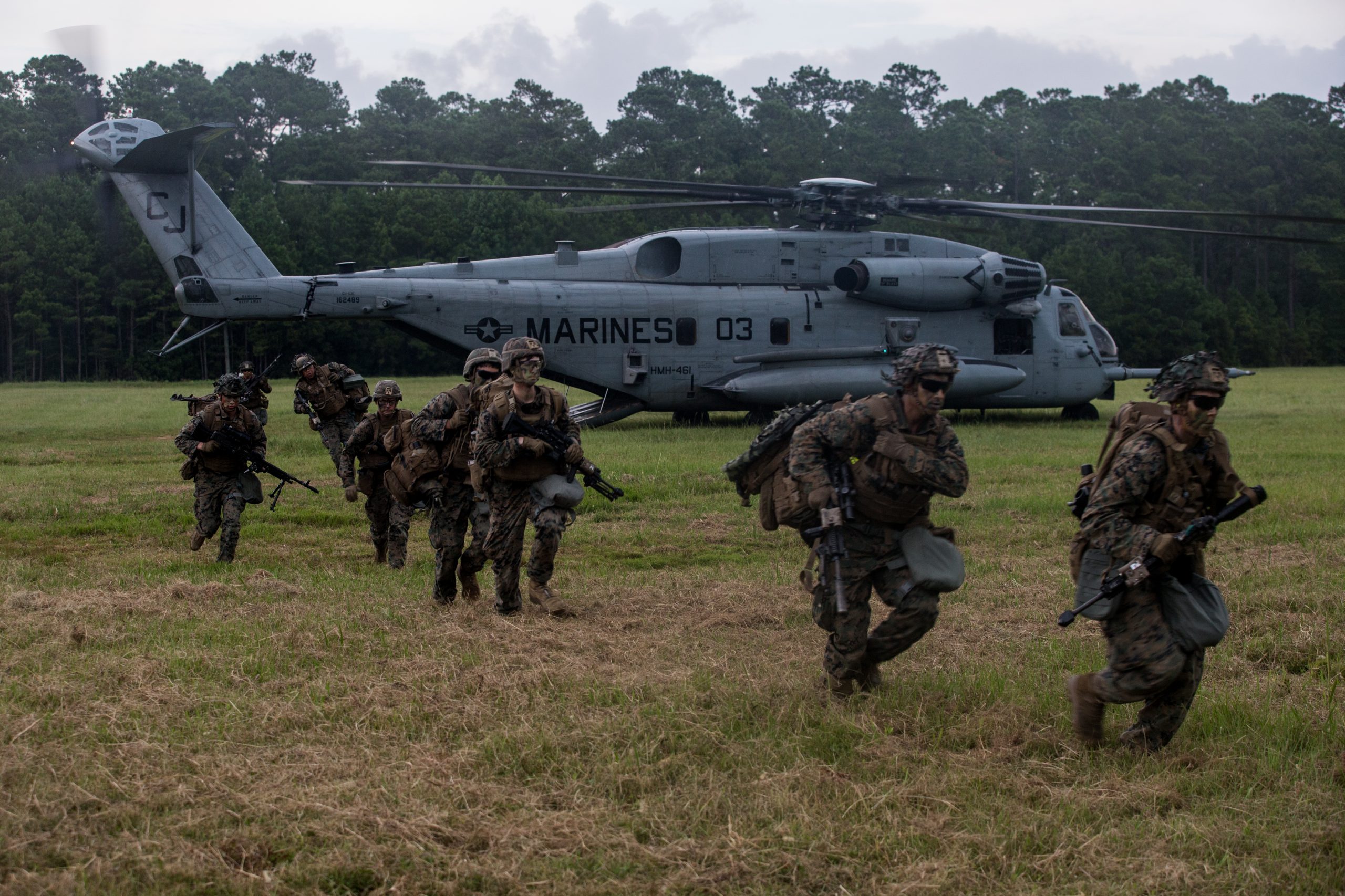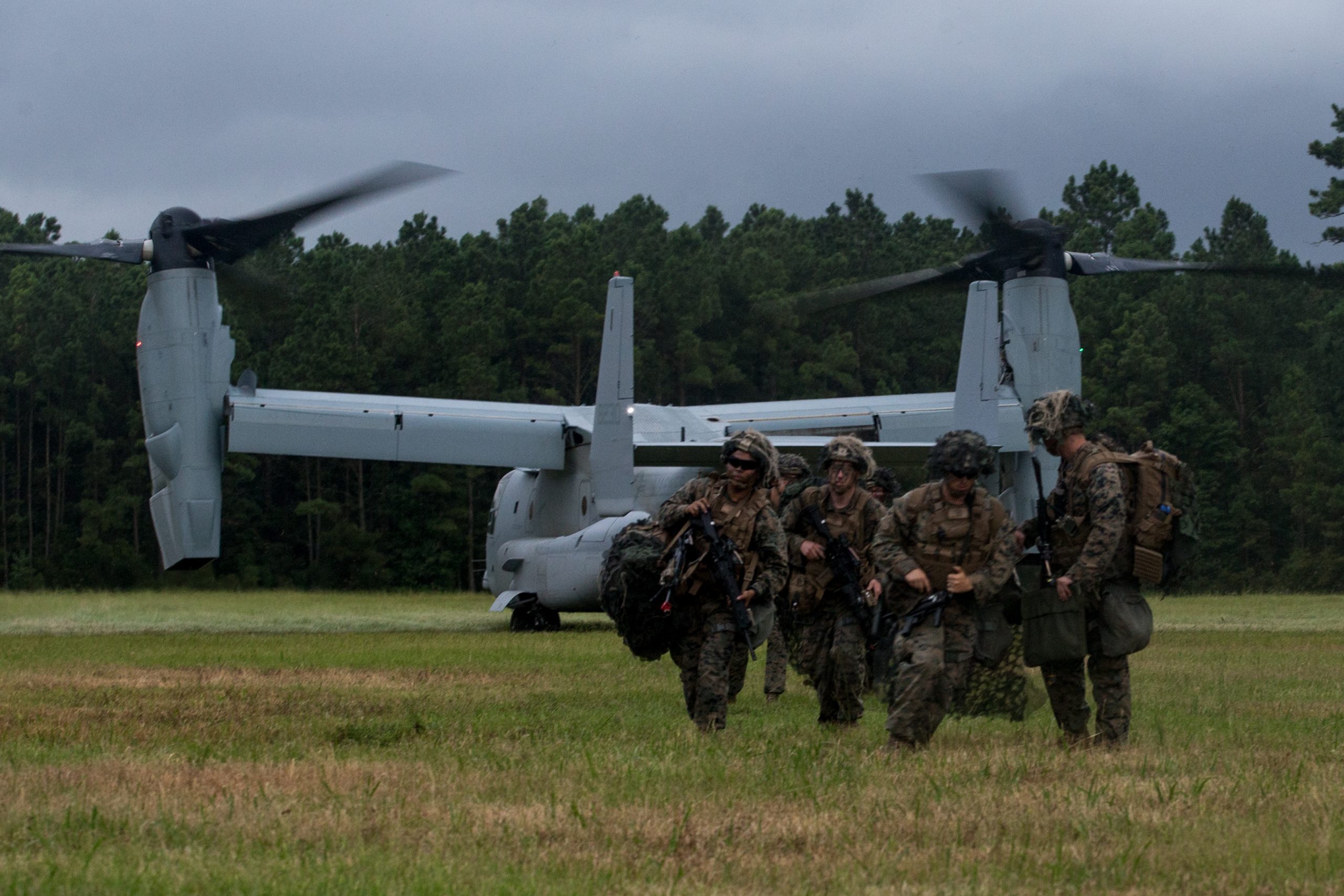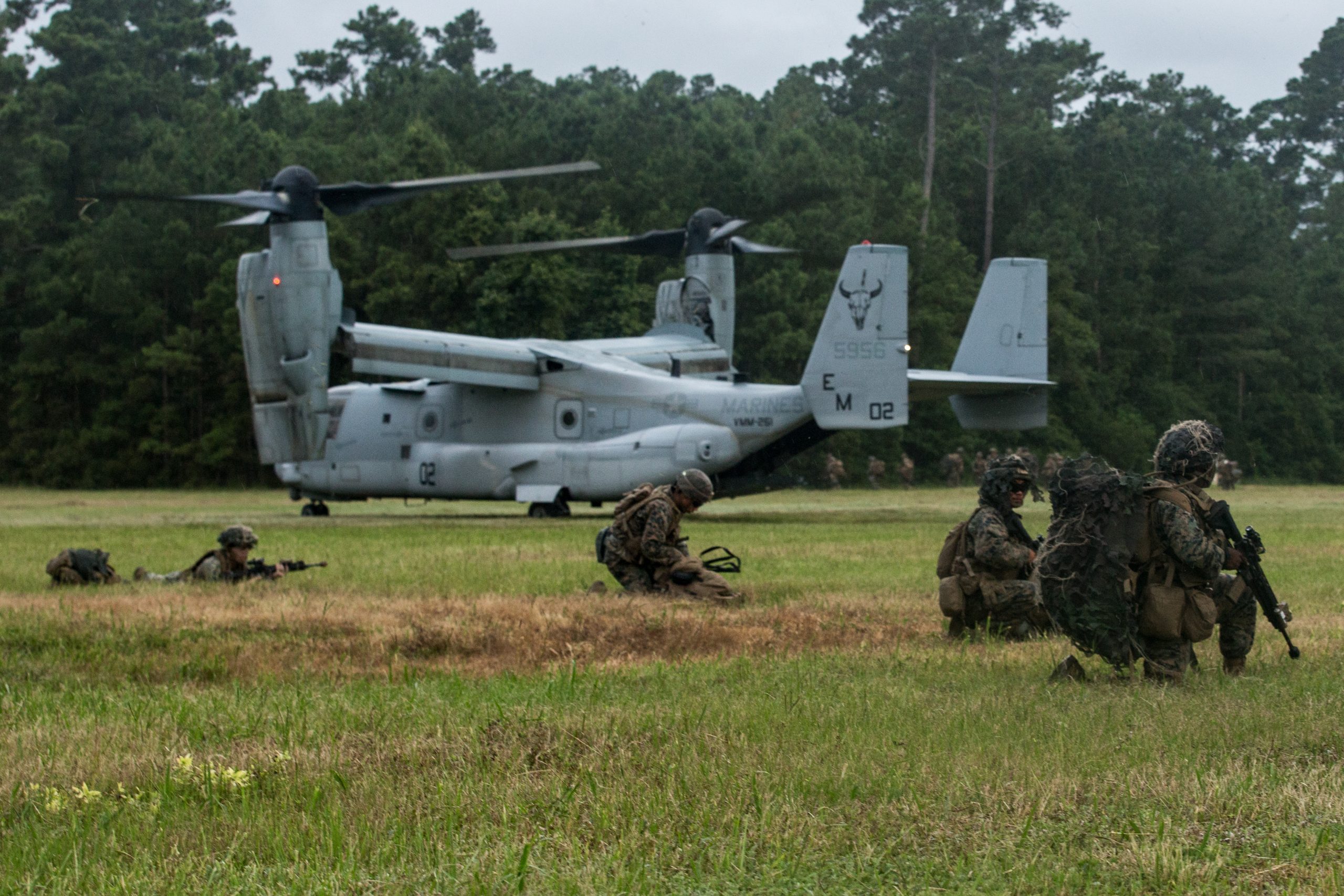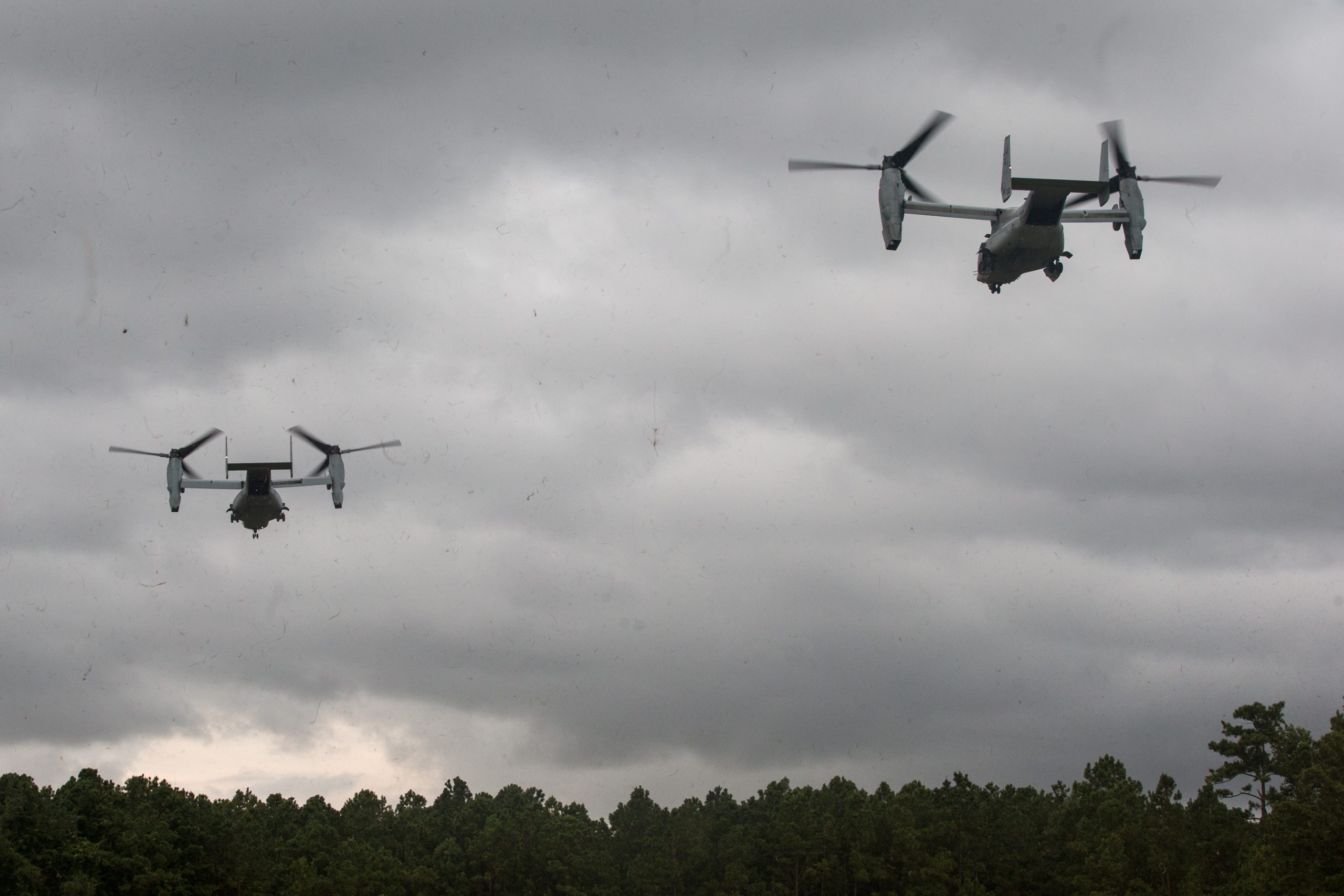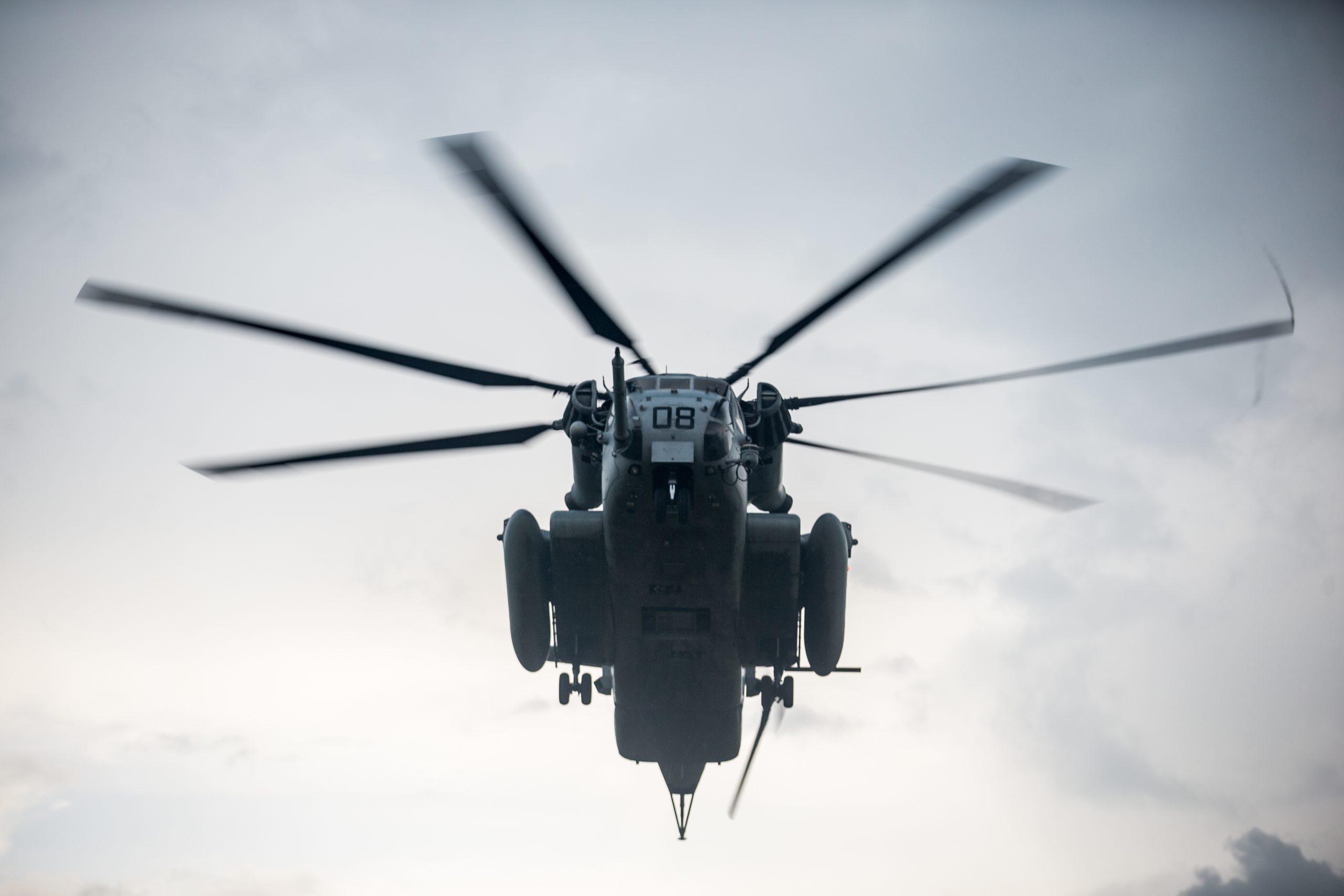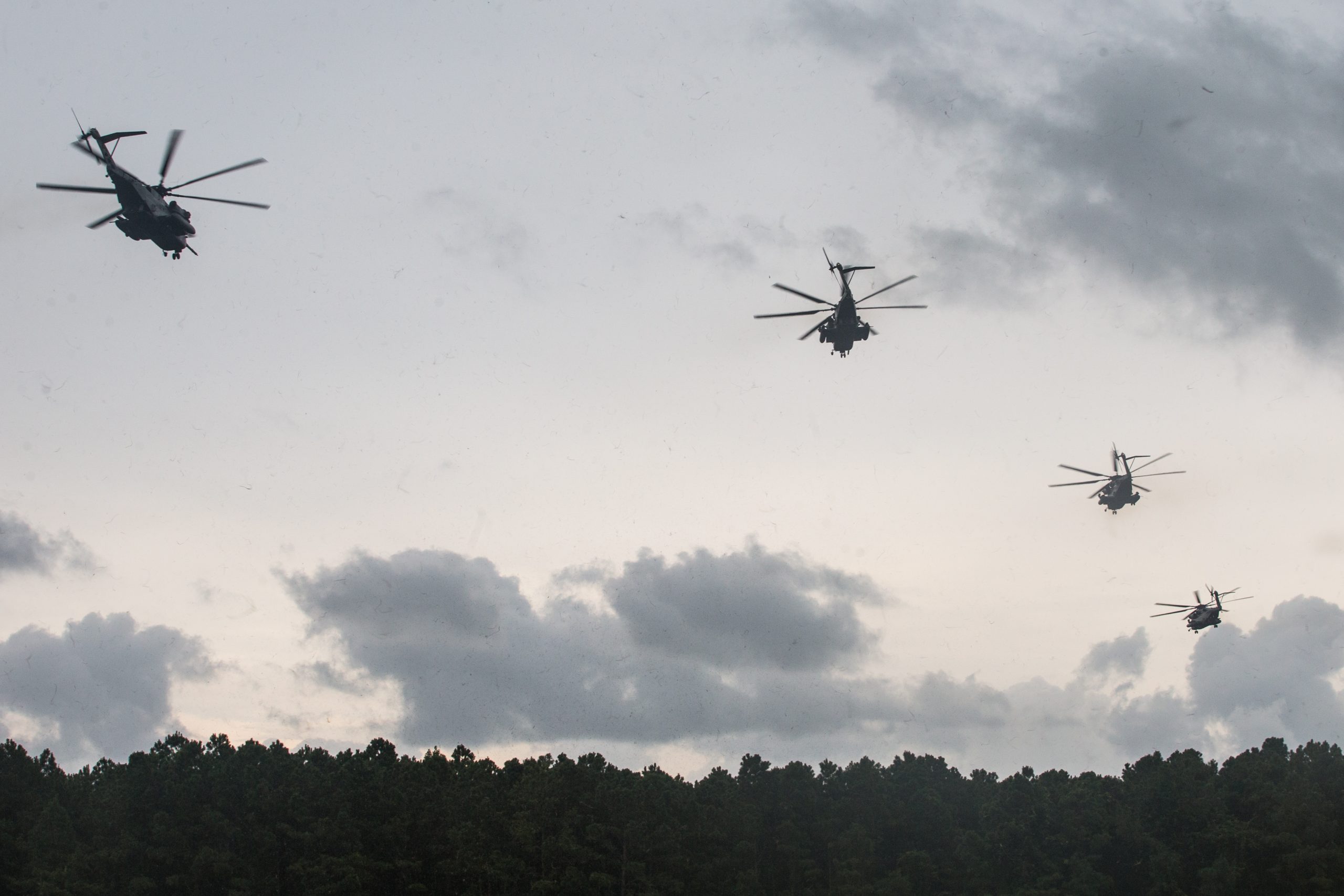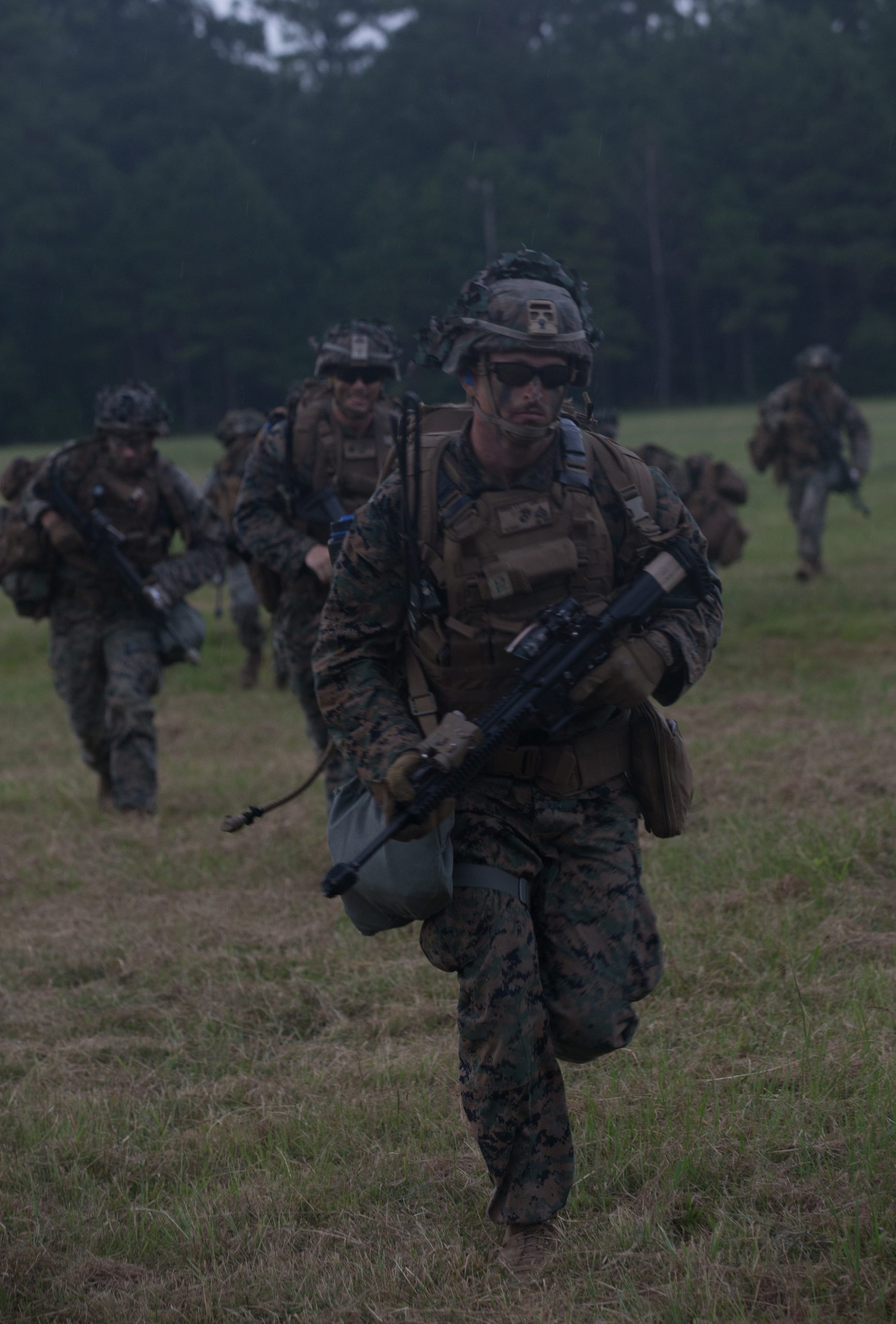By Robbin Laird
During my visit to 2nd Marine Aircraft Wing, and to New River Marine Corps Air Station, I had a chance to visit Marine Aircraft Group 26. Over the years, I have had a chance to come often to MAG-26 and to discuss the MV-22B Osprey, its introduction, its evolution and its progress. Each time I have come, I have had a chance to meet with the MAG and its commanding officer, who have been without exception, experienced, very competent leaders.
This visit proved no exception.
Col. John Spaid’s biography can be read below, but he has been with the Osprey since 2005. Indeed, he was part of the first Osprey deployment to Iraq in 2007, under Lt. Col. Rock (now Maj. Gen. Rock) and then with the first MEU deployment in 2009.
And we went back in history to discuss his initial experiences with the introduction and initial maturation of the Osprey.
Indeed, my first exposure to the Osprey was in a 2007 visit to MAG-26. In that discussion, we focused on how what was referred to me early on, as the Osprey Nation, was stood up and shaped a core group of combat warriors who brought such an innovative plane into combat and reshaped really how the Marines have operated since then.
In a discussion earlier this year with Lt. Gen. (Retired) George Trautman, the Deputy Commandant of Aviation when the Osprey was introduced into combat, he underscored that the approach was to introduce the Osprey into Iraq through an 18-month period with three groups of Marines each operating in Iraq for a six-month period. The first was head by now Maj. Gen. Rock, the second was by the current head of I MEF, and by Col. (Retired) “Mongo” Seymour.
Col. Spaid was part of that first squadron and indeed, with his co-pilot were the first to enter Iraq flying from the Middle East. His CH-46 squadron transitioned to Ospreys and he flew with that squadron to Iraq. He had flown with the HMM-263 in Iraq and was aware of its limitations and vulnerabilities, and saw the Osprey as providing capabilities for a different operational approach in Iraq.
“We could now operate at altitude with speed and range and able to circumnavigate the battlespace and then insert in a favorable point into that battlespace. We also had a more survivable aircraft with the new materials used for the air frame as well.”
The airplane was so different from legacy aircraft, that he jokingly compared his transition to the Osprey as equivalent for him of being inconceivably selected for the space program, with new technologies, new capabilities, and very different operational possibilities.
The tiltrotor capabilities were certainly and still are revolutionary, but the maneuverability side of the aircraft was also a challenging part of the Osprey revolution.
“The fly by wire capability and unique flight control system of the aircraft was new for the legacy rotary-wing community. And learning to fly it and get used to what it could do was exciting and a challenge to transition from the old ways of doing things. When I started working precision landings, it took a couple of days to adjust. It was not a normal aircraft and doing precision landings was different as well.
“Indeed, when I was first learning how to fly the aircraft in the simulator and even first flights in the aircraft, I believed that it was going to be an area weapon. There’s no way I’d be able to land precisely where I wanted to, but soon learned to do so with ease.
Then there was the tactical adjustment.
“Being able to operate high and fast while minimizing our time in the climb and dive then coming in unexpected, that was a tactical advantage that no one else had or seen.”
As the Marines were learning to use the aircraft in combat, my own observation was that Inside the Beltway, the aircraft started to get support from top leaders because it could take them around all of Iraq for inspections in a day, rather than having to operate over longer time within the limitations of how far a helicopter could fly.
Col. Spaid noted that indeed he had that experience of flying senior military around Iraq and doing so as I described it. For example, “On Christmas Day in 2007, we flew General Petraeus around to three or four different FOBs in a single day, and he loved the plane.”
Col. Spaid described the operational difference from a CH-46 in these terms: “A year and half earlier, I would fly a CH-46 from al-Assad out to al-Qa’im once a week. For rotary wing assets, you are going out West and the weather could be bad, and it was just a long-legged journey. With the Osprey, we did it daily.”
The Osprey started small in terms of deployment numbers for sure, but there was an esprit de corps to the team that would lead them to call themselves the Osprey Nation. It started by bringing back lessons learned from operations to then shape the TTPs for the follow-on squadrons.
As Col. Spaid put it: “In Iraq we spent a lot of time in the dust doing reduced visibility landings. We worked some initial tactics and procedures and brought those back to the squadrons. And that started an earnest process of refining tactics.
“We were a small community, but we came from a variety of aviation settings and platforms. And that mix of different experiences informed our approach on how best to operate the Osprey. We had a very good mix of healthy work ethics which drove innovative thinking.
“It was a melting pot of Marine Corps aviation. We all brought our best professional military aviator qualities into this effort, which means we had a unique opportunity to filter out bad habits that may have been lingering in our previous communities. We were working objective area mechanics and tactics for the aircraft and learning to fly the aircraft in those settings.”
But as the community grew, standardization needed to be shaped. “In the period from 2010-2012, we focused heavily on standardization as West Coast squadrons were standing up.”
Then in 2009, he deployed with the first MEU for the Osprey. Col. Paul “Pup” Ryan was their squadron commander. They operated in the CENTCOM area with Fifth Fleet. They were in Bahrain, Kuwait and Iraq during the first MEU tour for the Osprey. This was the first time the aircraft operated from the sea base to project power from the sea.
Col. Spaid served as the Aviation Maintenance Officer for that deployment. Among the 29 aircraft assigned to the composite squadron, 12 Ospreys were deployed with eight on the LHD and four on the LPD.
This was a learning challenge for the Navy as they had to adjust to Osprey operations and learn how it could operate from the ship, just as the Marines were learning how to maintain the new aircraft afloat. Eventually, the Navy officers onboard learned, in Spaid’s words, that “we could fix it faster, we could launch it faster, we could fold it faster than originally expected. In the end, the confidence of the Navy officers and crew grew.”
This experience clearly impacted CENTCOM leadership for it set in motion what would become known as Special Purpose MAGTFs, and in EUCOM and AFRICOM is now called the North Africa Response Force, the NARF. Combatant Commanders learned, in Spaid’s words: “that we could offload in Kuwait but operate all throughout Iraq. That was an eye opener for them.”
In effect, with the Osprey the Marines were finally demonstrating what a long range shipboard assault support asset could do while the entire concept of an ARG-MEU was transforming.
Then in 2010, the squadron took the Osprey to Afghanistan, where Lt. Col. “Buddy” Bianca was the commander, and I interviewed him prior to Afghanistan and after the first operations of the Osprey in Afghanistan as well.
This initial experience clearly has made Col. Spaid a plank holder in Osprey nation.
As Spaid put it: “Being a plank owner and setting up a squadron is one thing but taking that aircraft with the first squadron and doing the first MEU, doing the first combat deployment in Iraq, you’re not just the plank owner, you’re driving the ship that you built the plank on. It is liking being a plank owner for a revolutionary military advantage.”
But he noted that at the time you really did not focus on that.
“We were just doing our jobs. You focus on mission accomplishment; you don’t really understand the historical significance of the event at the time. There were some really significant contributions there from the whole team, but I don’t think you really appreciate it until later.”
When I first visited the flight line at New River in 2007, there were four aircraft on the tarmac. When looking at the tarmac, now there are a large number of Ospreys at rest, at least for a brief period of time between flights and operations. 13 years has brought significant change both to the Marine Corps and to the airplane and now will do so for the Navy as they introduce their variant of the Osprey.
As Col. Spaid put it: “All our Marines are smarter. You still have hard working maintainers fixing the planes, but they are better armed with experience. Baseline pilot intellect is now through the roof. We’ve normalized what we thought was creative thinking and training.
“And now we’re asking them to be even more creative and train for the next strategic challenge.”
I asked him, what was a primary focus during his time as CO of MAG-26 with regard to the aircraft itself?
For Col. Spaid the answer to that question is sustainment, sustainment, sustainment. “a good number of the software upgrades we are making are with regard to reliability and benefit the maintainer and the maintenance process. We are working hand in hand with the program office and with industry to find the best way to keep this aircraft reliable.”
We then discussed the decision by the Navy to buy the Osprey for its resupply role.
Col. Spaid highlighted several advantages.
First, there was enhanced prioritization to sustainment of the aircraft throughout the entire Naval Aviation Enterprise.
Second, was the benefit of training, as the Navy pilots are trained at New River and as the West Coast squadrons are stood up, there will be refresher training opportunities for Marines on the West Coast as well.
Third, with the Osprey deployed to both the carrier and amphibious fleets, there will be greater opportunity for parts availability across the fleet.
Fourth, there will be shared opportunities for upgrading the aircraft as well.
One area where I think this is clearly the case will be with regard to passive sensing on the aircraft and having the new MISR officers involved will bring benefits to both Marine Corps and Naval operators.
The initial training for USAF Osprey pilots and maintainers is at New River as well, but because the specialized mission and equipment on the USAF variant, there is less impact from commonality than will occur with regard to the Marines and the U.S. Navy working together, notably with the new emphasis on ways to shape enhanced Navy-Marine Corps integration as well.
But one area of partner training has occurred as the Japanese have acquired the Osprey and their pilots and maintainers trained at New River.
For Col. Spaid, the Japanese maturation at New River has been very significant and prepares the future for new FMS partners.
“As new FMS opportunities arise, we’ll be able to leverage off the great success we have had with our Japanese allies. We’ll change some things up a little bit, but it was a really good experience.”
In short, Col. Spaid was on the ground floor with the birth of Osprey nation.
And he is driving change as the next phases of Osprey operations unfold.
Colonel John Wesley Spaid, CO of MAG-26
Colonel John Wesley Spaid VI is a native of Louisiana and Texas. He attended Texas A&M University in College Station, Texas and was commissioned a Second Lieutenant in May 1994. Colonel Spaid subsequently reported to Marine Corps Combat Development Command, Quantico, Virginia for initial officer training at the Basic School. Following graduation in June 1995, he reported to Naval Air Station Pensacola, Florida for initial flight training. Colonel Spaid was designated a Naval Aviator in October 1997 and reported to Marine Corps Air Station New River for initial training in the CH-46E in December, 1997.
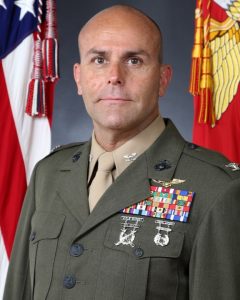
In April 1998, he reported to Marine Aircraft Group 16, Marine Corps Air Station El Toro, California and was subsequently assigned to HMM-164 then re-assigned to HMM-161. From August 2000 to February 2001, Colonel Spaid deployed with HMM-161(Rein) and the 13th Marine Expeditionary Unit. Colonel Spaid attended the Tactical Air Control Party course at EWTGPAC and was designated as a Forward Air Controller in May 2001. He then reported to Third Battalion, Fifth Marines, Camp Pendleton, California to serve as the Battalion Landing Team (BLT) Air Officer.
From December 2001 to June 2002 Colonel Spaid deployed with BLT 3/5 and the 31st Marine Expeditionary Unit. Following his tour with 3/5, Colonel Spaid reported to Quantico, Virginia to attend the newly designated Expeditionary Warfare School from August 2002 to February 2003.
Prior to completing the academic year, Colonel Spaid was re-assigned to 3/5 to serve as the Battalion Air Officer during Operation IRAQI FREEDOM I from February to May 2003.
In June 2003, Colonel Spaid reported to HMM-263 at Marine Corps Air Station New River. From June 2004 to February 2005, Colonel Spaid deployed with HMM-263(Rein) and the 24th Marine Expeditionary Unit during Operation IRAQI FREEDOM II and served as the Aviation Combat Element Administration Officer.
He subsequently served as the 2d Marine Aircraft Wing Deputy A/CS G-1 and MV-22 Liaison Officer from May to October 2005, while HMM-263 stood down for the MV-22B transition.
In October 2005, Colonel Spaid reported to VMMT-204 at Marine Corps Air Station New River and designated an MV-22B pilot in April 2006. As a VMM-263 “plankowner”, he served as the Intelligence Officer and Assistant Operations Officer.
From September 2007 to April 2008, Colonel Spaid deployed with VMM-263 during Operation IRAQI FREEDOM 06-08.2. He then served as the Marine Corps’ first Aviation Maintenance Officer for a composite Osprey squadron from April 2008 to February 2010, while deploying with VMM-263(Rein) and the 22nd Marine Expeditionary Unit.
During the summer of 2010, Colonel Spaid executed orders back to Marine Aircraft Group 16 at Marine Corps Air Station Miramar, California and assumed the duties as the Tiltrotor Training Unit Officer in Charge and was responsible for all initial MV-22 pilot transition training for the West Coast.
He then assumed the duties of Executive Officer for VMM-165 from March 2011 to March 2012. Colonel Spaid then deployed on a Joint Individual Augmentation billet to Kabul, Afghanistan in support of Operation ENDURING FREEEDOM to serve as the Deputy Director for Operations for NATO Training Mission-Afghanistan.
In June 2013, he returned to Marine Corps Air Station New River and assumed the duties of Marine Aircraft Group 26 Operations Officer. From April 2014 to April 2016, Colonel Spaid served as Commander of VMM-365, quickly went composite, and deployed with the 24th Marine Expeditionary Unit from which the squadron was recognized as the Tiltrotor Squadron of the Year.
Post command, Colonel Spaid served as Marine Aircraft Group 41 Executive Officer stationed at NAS-JRB Fort Worth, Texas from July 2016 to July 2017. In July 2017, Colonel Spaid reported to Naval Striking and Support Forces, NATO in Lisbon, Portugal and served as the ACOS J7 for Education, Training, Exercises and Evaluation.
In July 2018, Colonel Spaid graduated from the United States Army War College Distance Education Program with a Master’s Degree in Strategic Studies. In July 2019, Colonel Spaid served as Commanding Officer, Marine Aircraft Group-26 at MCAS New River, Jacksonville, North Carolina.
Colonel Spaid has logged over 2,700 total mishap-free hours. His personal decorations include the Defense Superior Service Medal, Bronze Star, Meritorious Service Medal with one gold star, Strike/Flight Air Medal with numeral “10”, Navy Commendation Medal with combat “V” and 3 gold stars, Navy Achievement Medal with one gold star.
Featured Image: An MV-22 Osprey with Marine Medium Tiltrotor Squadron 365, Marine Air Group 26, flies behind the lead aircraft after conducting a confined landing area exercise aboard Camp Lejeune, N.C., Aug. 4, 2015. Marines with VMM-365 rehearsed different drop off and extraction scenarios at Landing Zone Bluebird and Landing Zone Bat aboard Camp Lejeune to maintain skills and standards within the squadron. (U.S. Marine Corps photo by Cpl. Alexander Mitchell/released)


